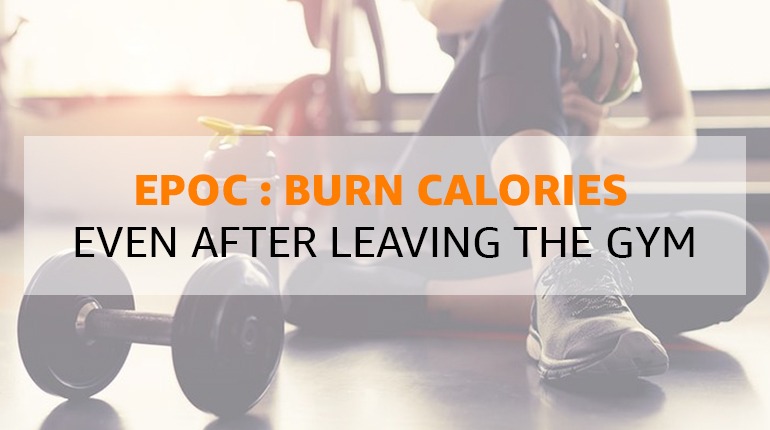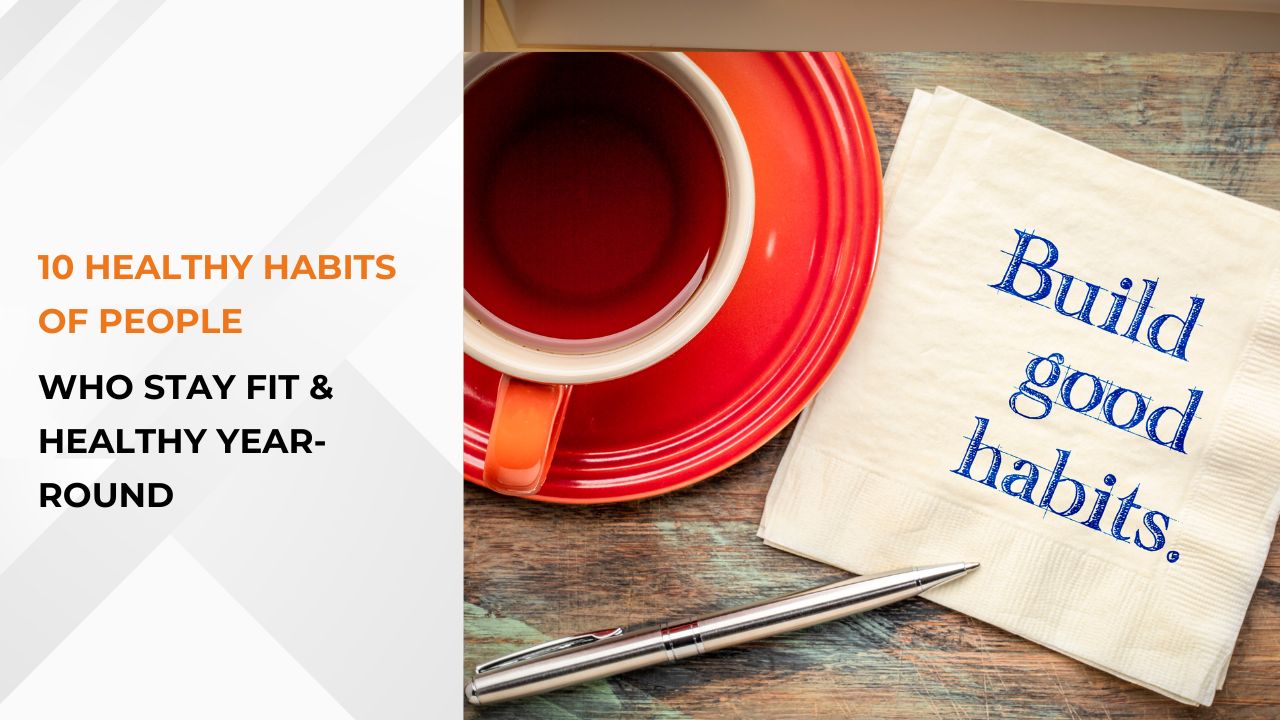What is EPOC ? Secrets to Burn Calories Post-Workout Uncovered

In the realm of fitness and exercise, you might have come across the term EPOC often. EPOC stands for Excess Post-Exercise Oxygen Consumption. EPOC refers to the phenomenon where your body continues to burn calories even after you’ve finished your workout session. In simple terms, EPOC is like your body’s bonus calorie burn after a workout. Even after you’re done exercising, your body keeps working hard to recover. It uses up extra energy, helping you burn calories even when you’re resting or going about your day. It’s like getting extra rewards for your workout even after you’ve left the gym!
This intriguing concept has garnered significant attention in the fitness community due to its potential impact on weight loss and overall metabolic health. Dive into this article by the idea of boosting your metabolism beyond the workout.
Understanding EPOC: Your Metabolism at Work
Also known as oxygen debt, EPOC is the amount of oxygen required to restore your body to its resting level of metabolic function. This bodily function is known as homeostasis. It also explains how your body can continue to burn calories long after you’ve finished your workout. Exercise scientists have also referred to EPOC as “oxygen debt” or the “afterburn effect.”

After an intense workout session, you might notice that your body feels warm, your heart rate is elevated, and you’re still breathing heavily. These are all signs that your body is working to restore its oxygen level to a stable level. EPOC, often referred to as the “afterburn effect,” is the process through which your body expends energy to return to its pre-exercise state. This post-workout oxygen consumption leads to an increased metabolic rate, causing you to burn more calories than you would during a period of rest.
Factors Influencing EPOC
Several factors play a role in determining the extent of EPOC experienced after a workout. They are:
1. Exercise Intensity:
First, the higher the intensity of your workout, the greater the EPOC effect. High-intensity interval training (HIIT) and strength training tend to produce more significant afterburn compared to steady-state cardio.
2. Exercise Duration:

Longer workouts may contribute to a prolonged EPOC. However, intensity often outweighs duration in terms of impact.
3. Fitness Level:
Well-trained individuals might experience a more rapid EPOC recovery due to their efficient cardiovascular systems.
4. Type of Exercise:
Different exercises engage various muscle groups and energy systems, influencing the magnitude of the afterburn effect.
4 Exercises to Maximize EPOC and Supercharge Calorie Burn
If the idea of burning calories even after leaving the gym excites you, there are strategies you can incorporate into your routine to optimize EPOC:
1. High-Intensity Interval Training (HIIT): Bursts of Intense Energy

HIIT is a powerhouse when it comes to triggering EPOC. The explosive bursts of high-intensity activity push your body to its limits, creating an oxygen debt that must be repaid during recovery. To maximize EPOC with HIIT, include exercises like sprint intervals, burpees, mountain climbers, and squat jumps. Running on a treadmill can be an excellent component of a HIIT (High-Intensity Interval Training) routine designed to maximize the EPOC.
Now, set the treadmill at a faster pace (around 14-16 kilometers per hour) and run as fast as you can for 30 seconds. Then, slow down the treadmill and walk for 1 minute to catch your breath and recover. Repeat this pattern 8 times.
Finally, Cool down by walking at a comfortable pace for 5 minutes. This intense cycle of exertion and recovery sets the stage for an extended afterburn, as your body works hard to restore its equilibrium.
2. Complex Strength Training: Engaging Multiple Muscle Groups

Complex strength training is a workout approach that can greatly enhance the EPOC. This type of training involves performing exercises that work multiple muscle groups and require a lot of energy. engage multiple muscle groups, demanding extra energy for post-workout repair. Instead of focusing on just one muscle group at a time, like in traditional weightlifting, complex strength training combines different movements into one sequence.
For example, a complex might involve engaging in a workout with fitness equipment like a deadlift, followed by a row, and then a shoulder press. This engages various muscles in your body and challenges your cardiovascular system as well. When you perform these complex movements, your body has to work hard to maintain balance, coordination, and strength. This effort requires a lot of oxygen and energy. As a result, your metabolism gets a significant boost during the workout, and even after you’re done exercising.
By using compound movements, you activate various muscle fibers, increasing the intensity of the workout and the subsequent EPOC effect. Aim for 3-4 sets of 8-10 repetitions with challenging weights, allowing your body to experience the rewards of sustained calorie burn.
3. Plyometric Training: Explosive Power for Prolonged Afterburn

Plyometric training is a type of exercise that focuses on explosive movements to build power and endurance. During plyometric exercises, you engage in movements like jumping, hopping, and bounding. These actions require your muscles to stretch and contract rapidly, generating a lot of force in a short amount of time. This explosive effort taps into your body’s fast-twitch muscle fibers, which are responsible for powerful movements.
Besides, moves like box jumps, jump squats, and plyometric push-ups engage fast-twitch muscle fibers, elevating heart rate, and boosting calorie expenditure. Incorporating plyometrics into your routine not only enhances strength and power but also sets the stage for an extended EPOC. Aim for 3-4 sets of 12-15 repetitions, focusing on explosive execution and proper form.
In simple terms, plyometric training involves jumping and explosive movements that make your body work hard. This boosts your metabolism, causing you to burn calories for a longer time even after you’ve finished your workout. It’s like giving your body an extra calorie-burning boost that lasts beyond the gym.
4. Rowing Machine Intervals: Total-Body Intensity

Lastly, using a rowing machine involves a full-body workout that engages your legs, core, back, and arms. During rowing machine intervals, you’ll alternate between periods of intense rowing and active recovery. This combination pushes your muscles and cardiovascular system to work hard. It creates an oxygen debt that your body needs to repay even after the workout.
Begin by rowing at a near-maximum effort for a short period, such as 20-30 seconds. This gets your heart pumping and muscles firing. Then, you transition to the recovery phase by slowing down to an easier rowing pace for about 40-60 seconds. So, this combination of working out on this fitness equipment places a significant demand on your body’s energy systems, leading to a substantial EPOC effect.
Embrace EPOC for Optimal Calorie Burn
Remember, the journey to fitness encompasses various elements, including nutrition, consistency, and overall lifestyle choices. Embracing EPOC as one piece of the puzzle can contribute to your long-term health and well-being goals. When you exercise regularly, your body’s baseline calorie-burning rate increases. This ensures that you continue to burn calories consistently throughout the day, even during periods of rest. This metabolic rate is like a steady engine that keeps running, even when you’re not active. So, the next time you’re catching your breath post-workout, take a moment to appreciate the remarkable processes your body is undergoing to keep those calories burning.

